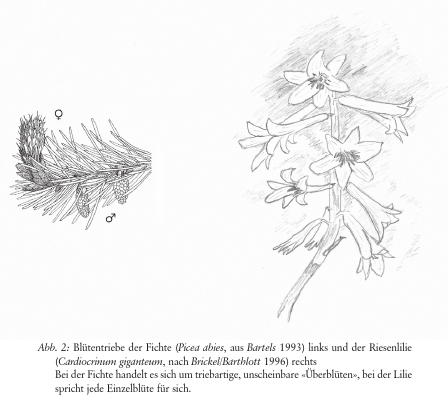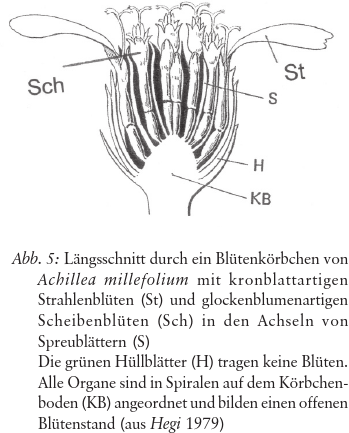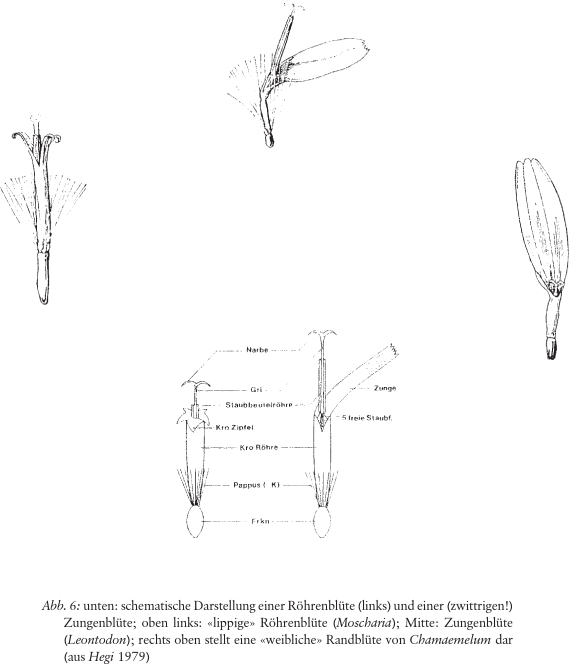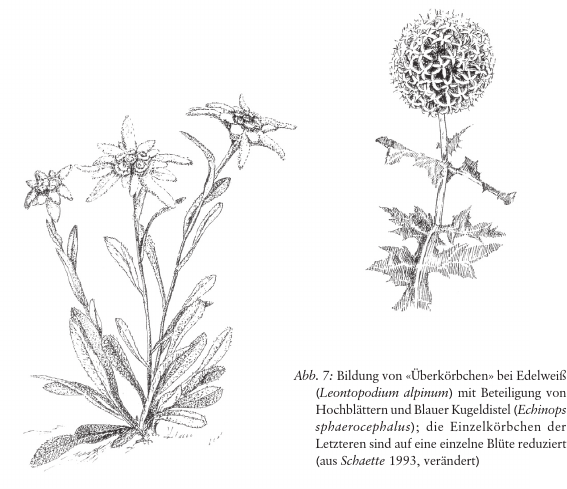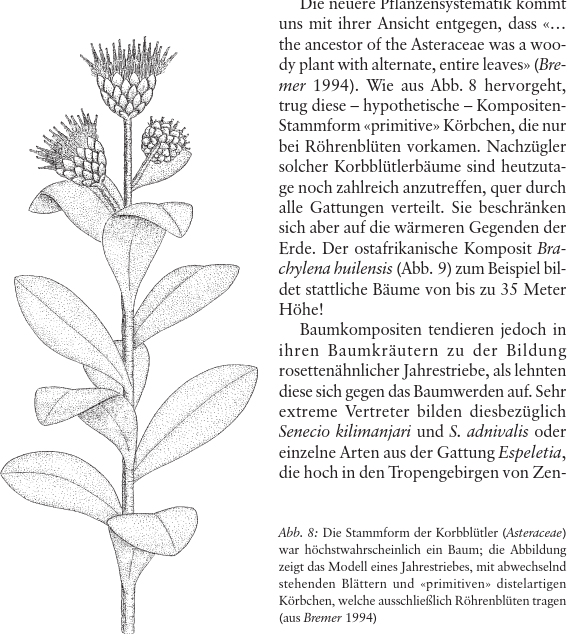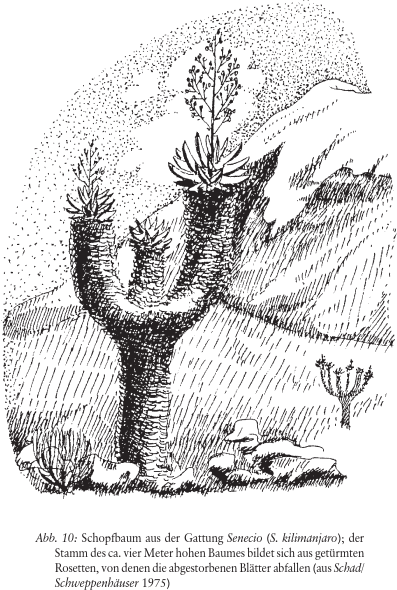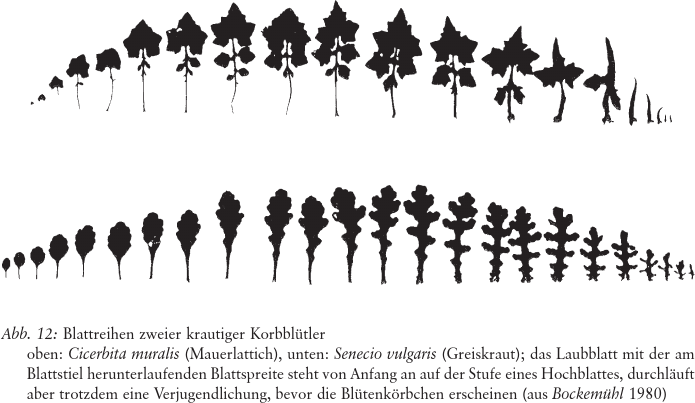«Die Korbblüte ist etwas, was man nennen könnte einen zu schnell aufgeschossenen Baum»
Export Article Citation as
- Plain text
- BibTeX
- RIS format
- Download price : € 6.00
Abstract:
The plant type assumes a complete form in the tree; many examples of the plant are united on a selfgenerated, plant-mineral substrate. Trees are thus durable, complex organisms, landscapes within landscapes. In forming a crown a tree creates over a period of time a characteristic space and in doing so gradually acquires a totally individual appearance. The composite flowers of the Compositae family also comprise many - vegetative and generative - individual organs, in this case as a complex flower; an entire inflorescence looks as if it is a single flower. And here too, as with a tree crown, one encounters something thoroughly individualised, though flower-like, at a more expressive level. Are the Compositae trees manifesting at the level of the flower, only with correspondingly shortened life spans? The following discussion attempts to approach this question from various aspects and to find an answer that can contribute to understanding the relationship between trees and herbaceous plants.

